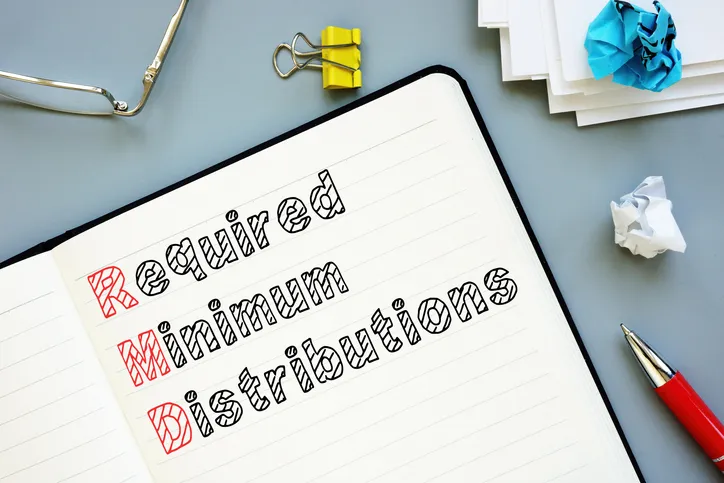I’ll reach my RMD distribution age in 2026, and I’m trying to figure out how much I can transfer from my traditional TSP account into an external Roth IRA in 2025 without exceeding the IRMAA threshold for Medicare Part B premiums. I had to pay a significant premium last year because I exceeded the threshold. I understand that the amount of the rollover to the Roth counts as taxable income, but which other specific line items on Form 1040 are also included in my taxable income? It has been very difficult to fully understand this and get a clear-cut answer.
– Thomas
I’m sorry you’ve had so much trouble with this topic—many retirees run into similar questions when planning Roth conversions around Medicare premium thresholds. Fortunately, the answer is pretty straightforward: the income figure that determines your IRMAA bracket is your modified adjusted gross income (MAGI), which consists of your adjusted gross income (AGI) plus any tax-exempt interest you receive.
A financial advisor can help you create a retirement income strategy that accounts for RMDs, Medicare premiums and other tax considerations. Connect with an advisor today.
What Is IRMAA?
The income-related monthly adjustment amount (IRMAA) is a surcharge added to your Medicare Part B and Part D premiums if your income exceeds specific thresholds set by the federal government. Individuals with income below the lowest threshold pay only the standard premium ($185 per month in 2025), with no additional IRMAA charge.
For 2025, the IRMAA brackets and the associated premiums are:
| Income | Part B premium | Part D premium |
| Single: $106,000 and below Married: $212,000 and below | $185 | Plan premium |
| Single: Over $106,000 up to $133,000 Married: Over $212,000 up to $266,000 | $259 | $13.70 + plan premium |
| Single: Over $133,000 up to $167,000 Married: Over $266,000 up to $334,000 | $370 | $35.30 + plan premium |
| Single: Over $167,000 up to $200,000 Married: Over $334,000 up to $400,000 | $480.90 | $57 + plan premium |
| Single: Over $200,000 up to $500,000 Married: Over $400,000 up to $750,000 | $591.90 | $78.60 + plan premium |
| Single: $500,000 and above Married: $750,000 and above | $628.90 | $85.80 + plan premium |
(Consider working with a financial advisor to plan your income in a way that helps minimize IRMAA surcharges and supports long-term tax efficiency.)
What Is IRMAA Based on?

IRMAA might sound straightforward, but the way the Social Security Administration calculates the income used to determine it can be surprisingly complex.
The calculation is based on a measure called modified adjusted gross income (MAGI). There are a few key details that often trip people up and may be contributing to your frustration:
- IRMAA uses your income from two years prior. That means your 2025 Medicare premiums are based on the income reported on your 2023 tax return.
- MAGI isn’t shown as a line item on your tax return. Unlike gross income, adjusted gross income (AGI) or taxable income, you have to calculate MAGI manually.
- MAGI varies depending on context. Different programs use different formulas, so it’s essential to apply the version used specifically for Medicare IRMAA.
How to Calculate Your MAGI
MAGI always starts with your adjusted gross income (AGI), which appears on line 11 of Form 1040. From there, it’s adjusted depending on the context—for IRMAA, the calculation is relatively simple.
For IRMAA purposes, MAGI equals your AGI plus any tax-exempt interest, which is reported on line 2a of Form 1040. To estimate your IRMAA-related income for 2025, just add line 11 and line 2a from your 2023 tax return. The result determines which IRMAA bracket you fall into.
For example, if your AGI in 2023 was $95,000 and you earned $2,000 in tax-exempt interest from municipal bond funds, your MAGI for IRMAA purposes would be $97,000. (And if you need additional help calculating your MAGI or planning for IRMAA, speak with a financial advisor.)
Planning ahead for IRMAA
The MAGI calculation is most useful when used proactively, as you’re doing. If you complete a Roth conversion in 2025, that amount will be included in your AGI for that year—and it will affect your IRMAA bracket two years later, in 2027.
The challenge is that the IRMAA brackets for 2027 won’t be published until late 2026. By then, your 2025 MAGI will already be locked in, leaving no opportunity to adjust your income retroactively.
To plan effectively, you’ll need to estimate future IRMAA thresholds. The simplest approach is to use the current year’s brackets. A slightly more nuanced method is to project them using a modest inflation adjustment, such as 2% or 3%. (Then again, you could also work with a financial advisor who offers retirement and income planning services.)
Bottom Line

Planning around Medicare premiums means working with imperfect information, since key figures like future IRMAA thresholds are only released after the fact. Still, by understanding how MAGI is calculated and how it influences what you’ll pay, you can make more informed decisions about moves like Roth conversions and income timing. Even modest steps—such as tracking tax-exempt interest or projecting future brackets—can help clarify how current choices may ripple into future costs.
Retirement Planning Tips
- A financial advisor can help you navigate the complexities of retirement planning. Finding a financial advisor doesn’t have to be hard. SmartAsset’s free tool matches you with vetted financial advisors who serve your area, and you can have a free introductory call with your advisor matches to decide which one you feel is right for you. If you’re ready to find an advisor who can help you achieve your financial goals, get started now.
- Consider planning around the taxability of your Social Security benefits. Up to 85% of benefits can be taxed depending on your income. Coordinating withdrawals from taxable, tax-deferred and tax-free accounts can help manage how much of your benefit is included in your taxable income.
Brandon Renfro, CFP®, is a SmartAsset financial planning columnist and answers reader questions on personal finance and tax topics. Got a question you’d like answered? Email AskAnAdvisor@smartasset.com and your question may be answered in a future column.
Please note that Brandon is not an employee of SmartAsset and is not a participant in SmartAsset AMP. He has been compensated for this article. Some reader-submitted questions are edited for clarity or brevity.
Photo credit: Courtesy of Brandon Renfro, ©iStock.com/Andrii Dodonov, ©iStock.com/designer491
